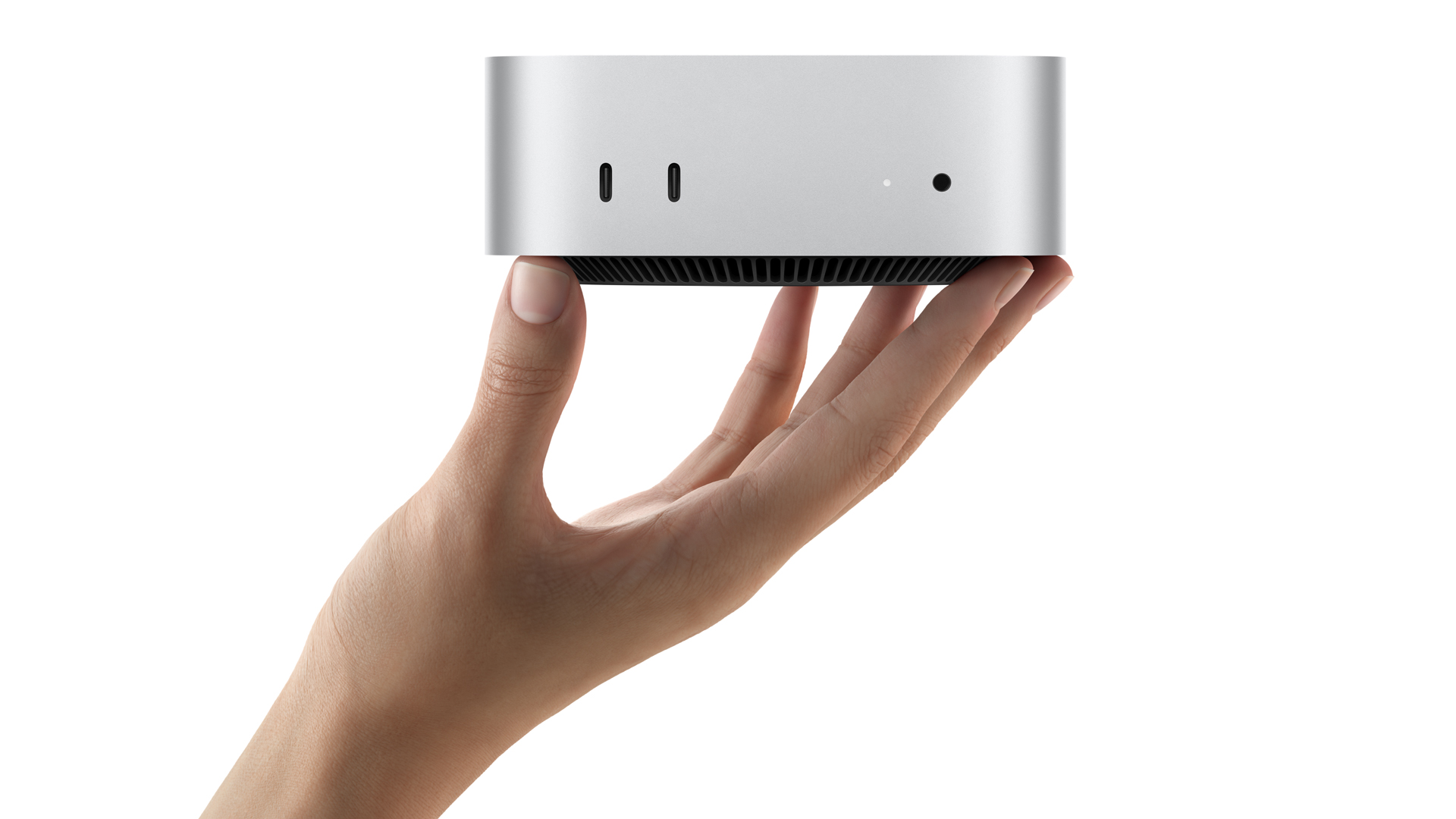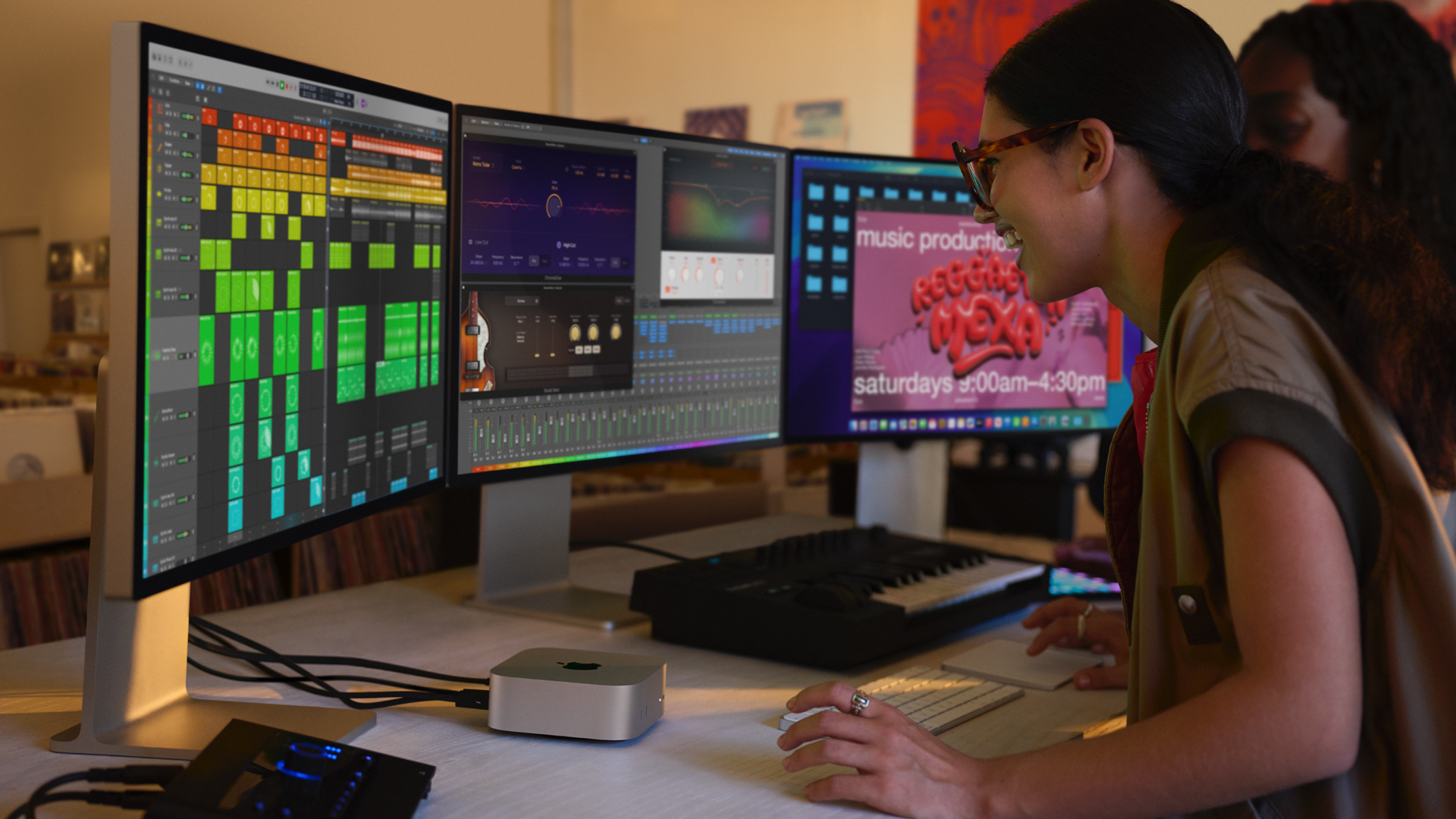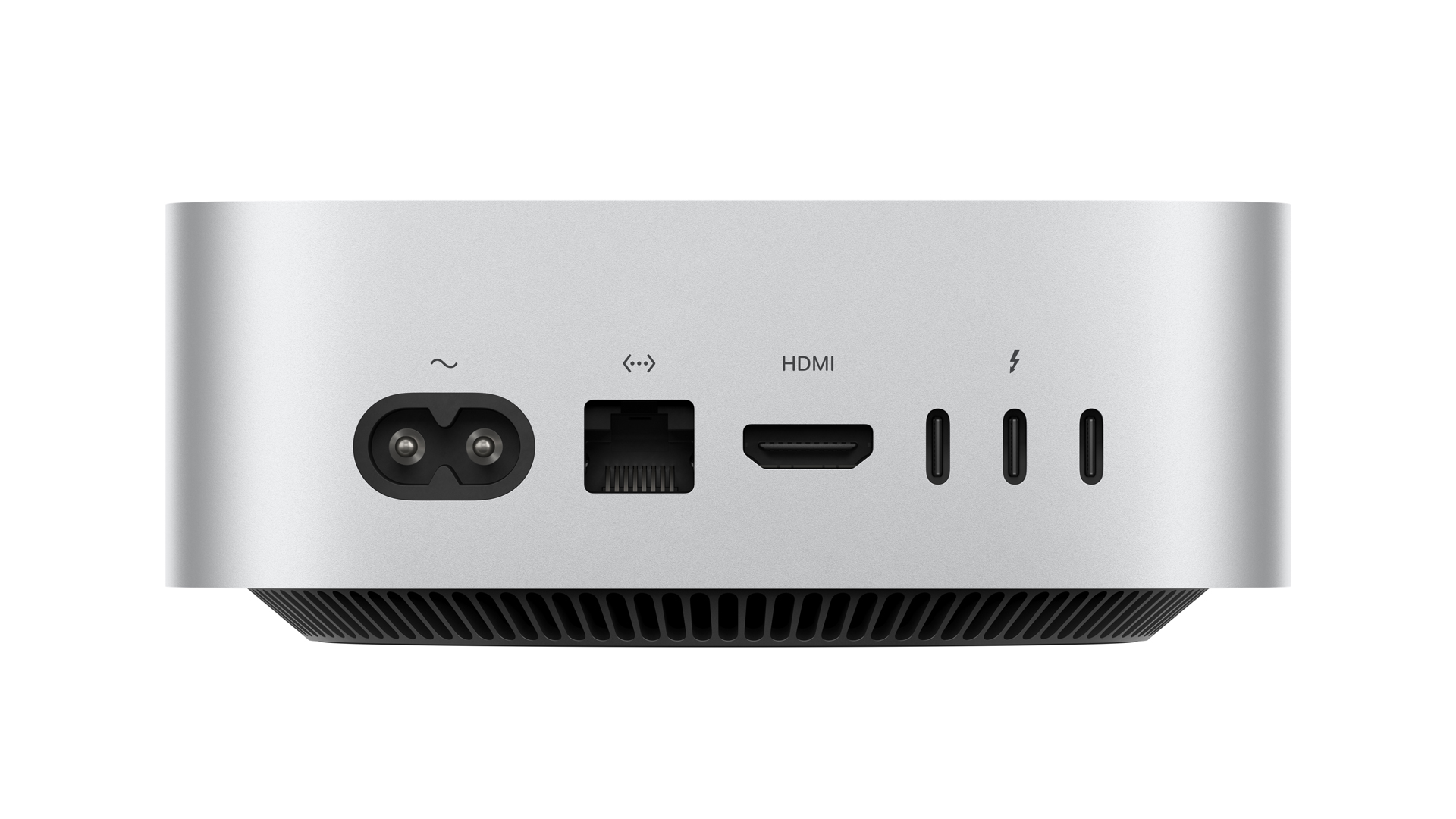
Apple has finally unveiled its next-gen Mac mini - sporting new M4 and M4 chips, a fresh focus on AI, and a major redesign that brings ports to the front of the device at last.
The reimagined chassis is even smaller than the excellent M2 Mac mini from 2023, which we called the 'best PC you can buy' in our review. With a form factor of just five by five inches, the M4 Mac mini is small enough to fit in your hand - but thankfully, that newly shrunken device doesn't trade off performance to achieve this compact design.
The M4 and M4 Pro chips offer a significant step up in performance from their M3 counterparts, with the M4 Pro in particular enabling Thunderbolt 5 connectivity on Mac devices for the first time as well as delivering best-in-class single-threaded performance and a Neural Engine that's reportedly up to twice as fast as the previous-generation model - boosting on-device AI capabilities to new heights, just in time for Apple Intelligence.
With pre-orders kicking off on October 29, the M4 Mac mini will be available from November 8, starting at $599 / £599 / AU$999. We've collated all the currently available information on this new Mac device right here, and we'll be reviewing it in short order too!
Cut to the chase
- What is it? A compact desktop computer that will run on Apple’s new M4 and M4 Pro chips.
- When is it out? Pre-orders start on October 29, with a full launch on November 8.
- How much will it cost? Pricing for M4 models starts at $599 / £599 / AU$999, while the more powerful M4 Pro models will start at $1,399 / £1,399 / AU$2,199
Mac Mini M4 Release Date and Price

As previous rumors suggested, the Mac mini was revealed on October 29, with pre-orders opening the same day. It will start landing with customers and in physical stores on November 8. Stock of the current Mac mini is supposedly running low, so it's the perfect time for Apple to release a refreshed model.
Pricing is a bit of a mixed bag. The base M4 model apes the pricing of the previous M2 model, starting at $599 / £599 / AU$999 - a pretty reasonable price for the performance and form factor being offered here, even if non-American buyers are somewhat given the short end of the stick.
Meanwhile, the M4 Pro configuration starts at $1,399 / £1,399 / AU$2,199 - a moderate price jump from the M2 Pro version, which is disappointing, but the improved chip performance will hopefully make up for that.
Launching alongside the M4 Mac mini (and the new M4 iMac) is also a slate of new peripherals updated to support USB-C instead of Lightning connectors: the Magic Keyboard starts at $99 / £99 / AU$149, the Magic Trackpad at $129 / £129 / AU$209, and the Magic Mouse at $79 / £79 / AU$149.
Mac Mini M4 Features

The Mac mini hasn't had a major redesign in over a decade, with the current look introduced all the way back in 2010. But that’ll soon change, as the new M4 Mac mini will be Apple’s “smallest computer ever”. For reference, it’s going to be slightly larger than an Apple TV box.
The M2 Mac Mini measures 197 x 197 x 35.8 mm (7.75 x 7.75 x 1.41 inches). By comparison, the updated model has a footprint of just 127 x 127 mm (5 x 5 inches) - although it is a little bit taller, it's still a considerable downsizing.
Teardown videos of Mac Minis have shown the M-series chips allow Apple to utilize smaller components. Perhaps the company saw it could get rid of all the space and decided to opt for a more compact device. Reports say people close to development refer to it as “essentially an iPad Pro in a small box”.
Another major part of the redesign is new ports - no longer confined exclusively to the rear of the device, the new Mac mini will feature two USB-C ports on the front panel, along with a headphone jack. It's a wise move from Apple to improve instant connectivity; previously, you'd have to fumble around the back of the unit to plug in a peripheral or dock, but that will no longer be the case with the M4 version. Mac minis with the M4 Pro chip will be able to use Thunderbolt 5 speeds on these frontal USB-C ports - the standard M4 model will presumably use Thunderbolt 4.
As for the ports on the rear of the device, these appear to be largely unchanged - HDMI for video output, an Ethernet port, and three USB-Cs - making five in total, an upgrade from the M2 model's four. However, the redesign has also given Apple the opportunity to eliminate USB-A ports entirely, which could unfortunately be a dealbreaker for some users.
Gaming performance should enjoy a boost here too. Although Apple has yet to fully commit to macOS as a major gaming platform, it's fair to say that the integrated GPU in the M4 Pro chip is perfectly capable of running games, offering faster cores and double the ray-tracing performance over the M3 Pro. The base configuration also now starts at 16GB, which is a good shift.
Lastly, Apple Intelligence is a big part of this (and every other) new M4 device. With a new Neural Engine for handling AI workloads and support for up to 64GB of unified memory with a comically large 273GB/s bandwidth, this compact computer will be a powerhouse for local AI software.







